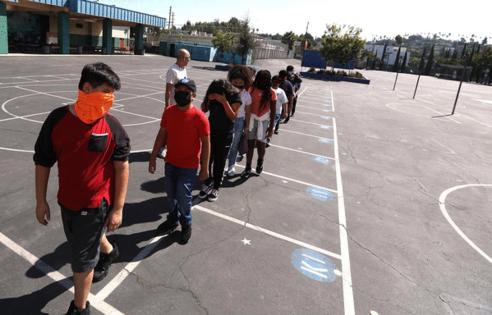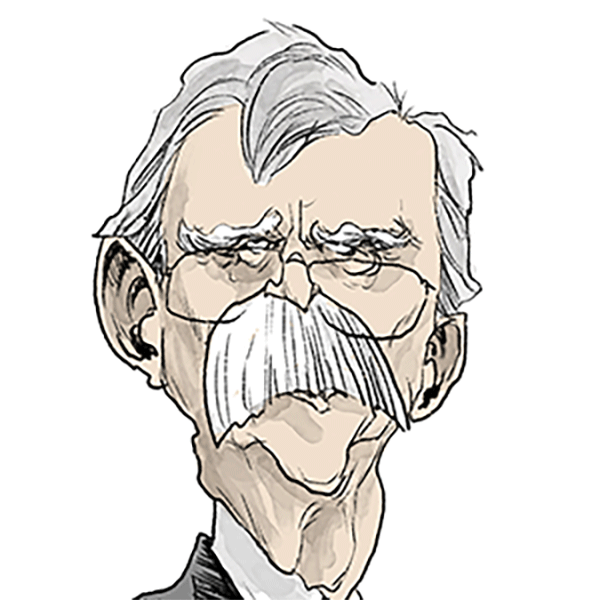Rising heat is causing students to underperform across the globe
Published in News & Features
As climate change drives temperatures higher, prolonged periods of heat exposure are doing more than just making classrooms uncomfortable. According to a new systematic review published in PLOS Climate, extended exposure to heat significantly impairs students’ cognitive abilities, affecting their academic performance, especially in complex subjects such as mathematics.
The study analyzed previous research encompassing nearly 14.5 million students across 61 countries. The findings show clear evidence that heat exposure over time is correlated to lower scores in math and other complex cognitive tasks among elementary, middle and high school students.
Even on days when temperatures were between 80 and 90 degrees Fahrenheit, the data show that students can experience heat stress, followed by a drop in cognitive performance. The effects of heat exposure on learning are often not seen until much later, said Konstantina Vasilakopoulou, a Royal Melbourne Institute of Technology professor who co-authored the paper with Matthaios Santamouris of the University of New South Wales. “So many studies have found that temperatures of the year before a serious exam affect students more than temperatures during the exam year itself. We simply do not have enough time to recover,” Vasilakopoulou said.
According to the paper, students from lower-income families often have less access to air-conditioned classrooms and homes, making them more vulnerable to the harmful effects of heat. Racial disparities were also evident in the data, with Black and Latino students in the U.S. seeing up to three times greater cognitive losses due to heat compared to their white peers.
“There are larger numbers of Black and Hispanic people living in poorer areas where the conditions are worse, temperatures higher, and air conditioning and ventilation often lacking,” Vasilakopoulou said.
Future climate scenarios predict even greater, and in some ways, surprising challenges. By 2050, if current warming trends continue without adequate adaptation measures, students in currently cooler regions may start to suffer the same problems that those in warmer climates do now. That’s because in places that are already hot, there’s more likely to be some amount of infrastructure to deal with the heat, whereas in colder areas, that may not be the case.
Adaptive strategies such as improved ventilation, air conditioning and green infrastructure can help reduce the effects, but many schools, particularly those in underserved areas, lack the resources to implement them effectively.
In Southern California, the findings resonate deeply. “As classroom temperatures rise over time — especially during extended heat waves or in schools with less shade, poorer insulation and lacking access to air conditioning — students tend to show declines in attention, memory and test performance,” said Edith de Guzman, a climate researcher at UCLA’s Luskin Center for Innovation. Heat can also affect students’ abilities to enjoy outdoor recreational activities, having serious effects on their physical, mental and social well-being, she said.
In L.A., public school starts in August — instead of September — further exposing students to heat while at school, and ultimately affecting those attending under-resourced campuses more.
Consider, for example, Orange County’s Garden Grove Unified School District, which serves cities including Anaheim and Santa Ana, where many campuses lack air conditioning, according to Thelma Briseno, a senior director at the L.A.-based nonprofit Climate Resolve. In previous summers, teachers have reported temperatures reaching 100 degrees on some days and having to resort to makeshift strategies to keep students cool, such as going out and buying bottles of water and fans.
“Things like an indoor heat standard really need to be in place, and there’s nothing like that that exists right now for schools,” Briseno said.
Some of the most striking findings from the various papers reviewed in the article found that for every 1 degree Celsius drop in temperature in a classroom, students’ speed and accuracy increased by 7.5% and 0.6%, respectively. Alarmingly, using the Intergovernmental Panel on Climate Change’s projected increase of 1.5 degrees Celsius over preindustrial levels by 2050, another study found that if no cooling measures are taken, elementary school students may see a cognitive performance drop of 9.8%.
After reviewing the findings, Dr. Marc Futernick, a Climate Resolve board member and managing editor of the Journal of Climate Change and Health, emphasized that what is at stake is no less than the future of humanity.
“If we are moving into a world where we can’t think, create or strategize as well as we could in the past, what does that mean for our future?” he said. “We should be focused entirely on preventing these effects, on controlling the climate crisis the best we can, and adapting our communities to things like extreme heat, preventing the exposure in the first place.”
Climate Resolve has advocated solutions such as “cool roofs,” increased tree planting and cool pavement technologies, which significantly reduce temperatures. “You obviously have to address the issue from a community standpoint,” Briseno said.
“Community cooling in residential areas and also within the school building themselves,” she concluded, “it’s a collaborative effort between people in the built environment.”
For example, a community-driven “cool communities initiative” in the Pacoima neighborhood of L.A. has proven to be successful, creating noticeable improvements in neighborhood temperature comfort.
The study emphasizes the urgent need for policymakers and education leaders to prioritize protecting students from rising temperatures. Without decisive action, educational disparities intensified by heat exposure will continue to grow, potentially hindering entire generations’ abilities to learn and succeed.
“We penalize vulnerable populations and need to provide opportunities for them to recover and lead the future,” Vasilakopoulou said. “We can’t pretend that we’re all equal. (We need) better conditions for our homes, for our schools, and for our cities.”
_____
©2025 Los Angeles Times. Visit at latimes.com. Distributed by Tribune Content Agency, LLC.







Comments